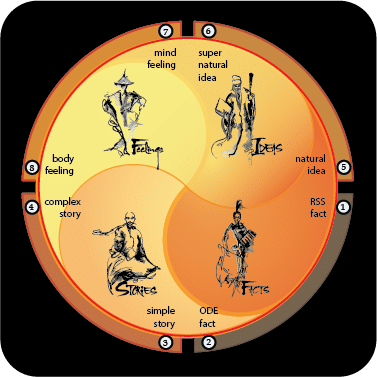What Are The Steps of the Scientific Method?
My apologies for not writing this from scratch. And for the blatant plug. The following is excerpted from my recent book; The Science of Discovery. See more at http://stevenpaglierani.com)
———————————————————————————————————————-
Even a brief review of the posts on Quora requesting an answer to this question reveals the depth of the problem with assuming there is a method. What are the “4 steps,” “5 steps,” “7 steps,” “8 steps” . . . how can this be science? In truth, what this confusion should tell us is that we have long been in need of, and deserve, a more exacting method. This said, consider the following:
———————————————————————————————————————-
What are the actions and goals of the current scientific method?
The Current Scientific Method
- Formulate a predictive hypothesis which disqualifies all but the desired observations (action). This focuses the work (goal).
- Design and execute cause-and-effect experiments (action) which turn these observations into logically sensible data (goal).
- Filter and arrange this data (action) until you arrive at a logically sensible outcome (goal).
- Contrast and compare this outcome with the hypothesis (action) in order to arrive at a logically sensible conclusion (goal).
And the actions and goals of constellated science?
The Constellated Science Method
- Use the Cartesian process—slate clearing, fact gathering, experimenting, and pattern seeking—to open and direct your mind (action). This insures you’ll value intuitions, facts, experiments, and concepts equally—and guarantees you’ll omit none of what you observe (goal).
- Use geometries One through Four to begin to gather and arrange a geometrically logical progression of evidence (action). This insures your observations will be focused, comprehensive, scientific, and relevant (goal).
- Use geometries Five and Six to geometrically arrange and correlate this evidence (action). This guarantees you’ll discover connections and relationships within this evidence (goal).
- Constellate these interconnections with those in all other maps (action). This functions as both a test and a proof for the validity of your work. If you fail to find these parallels, this indicates an inherent incompleteness. Conversely, if you find these parallels, this validates and integrates your discoveries into science’s entire body of work (goal).
Can you see how these two methods differ from each other? One method progressively separates you—and your work—from the rest of the world. The other progressively integrates you—and your work—into the world. Moreover, if we contrast and compare these two methods, we arrive at the following, initial conclusions . . .
